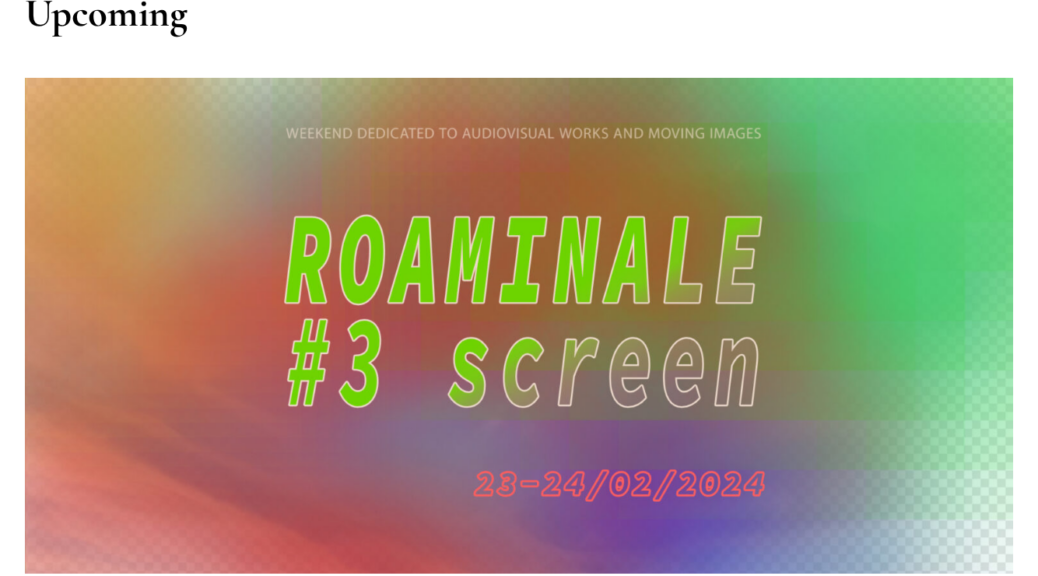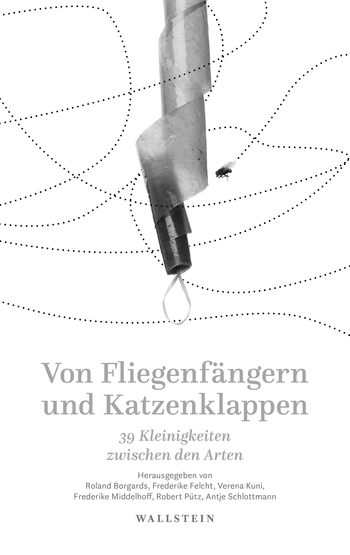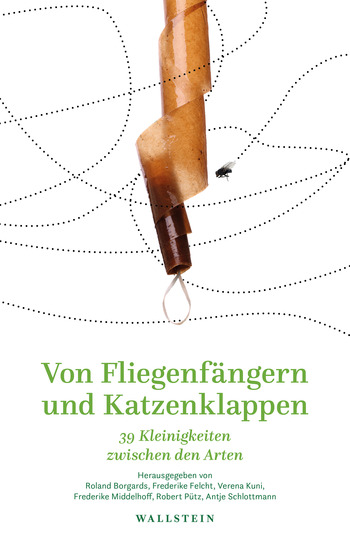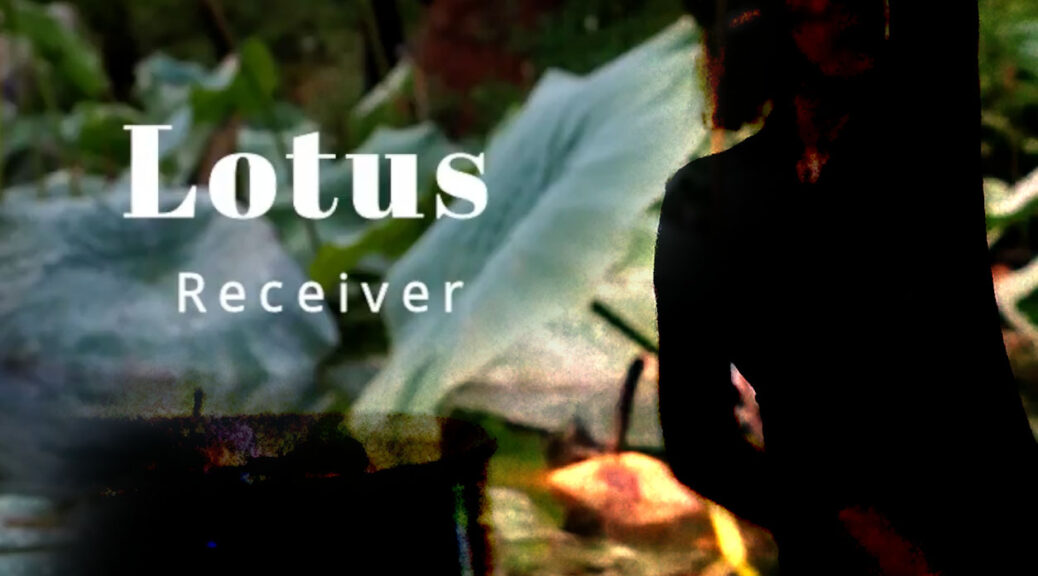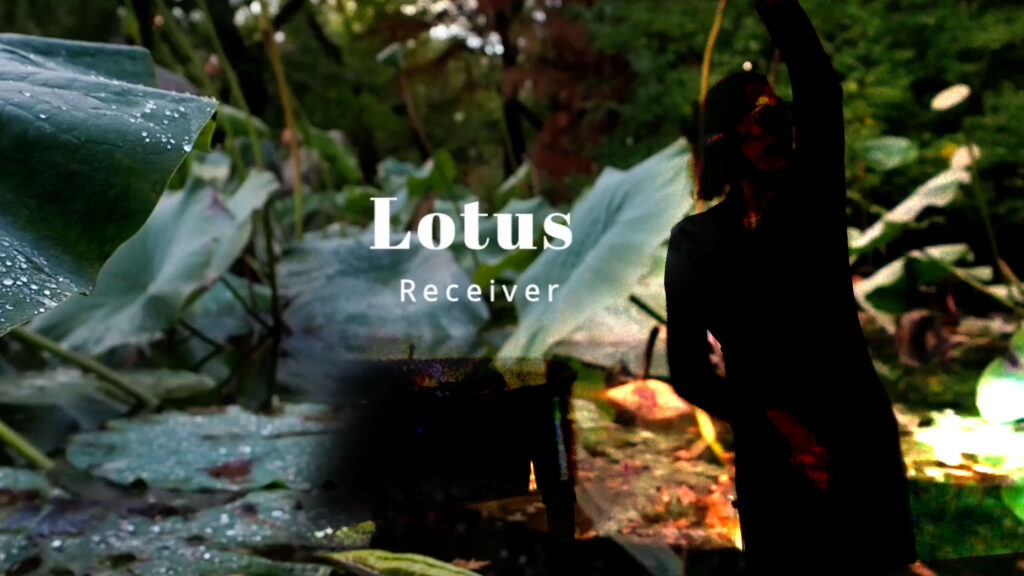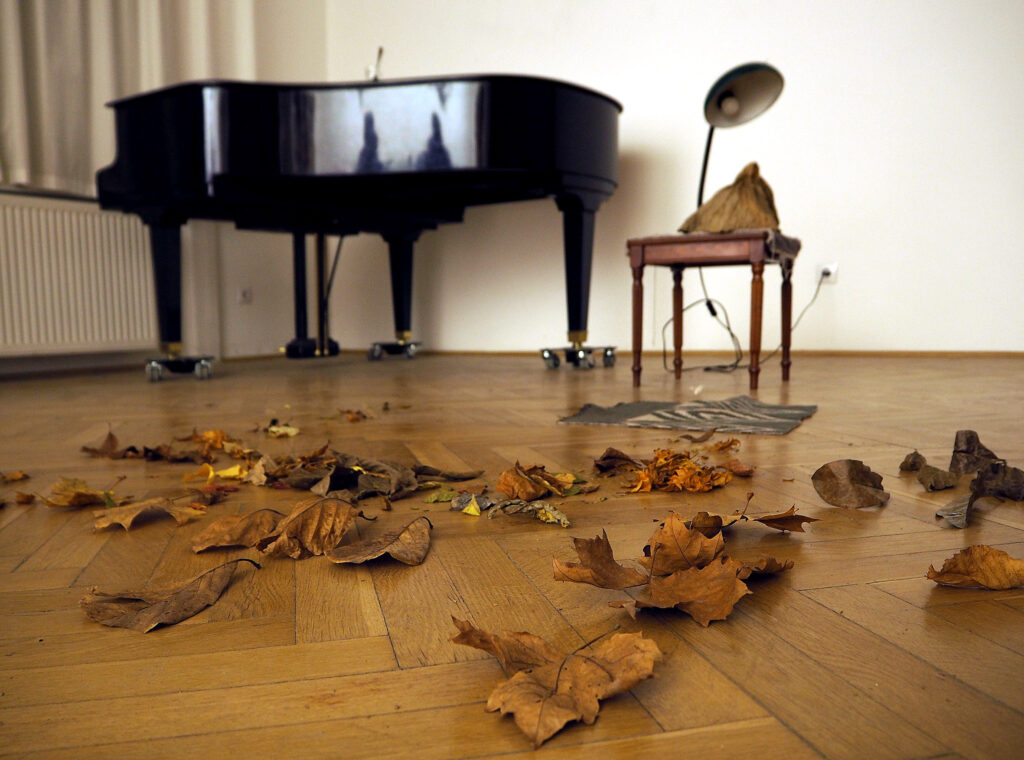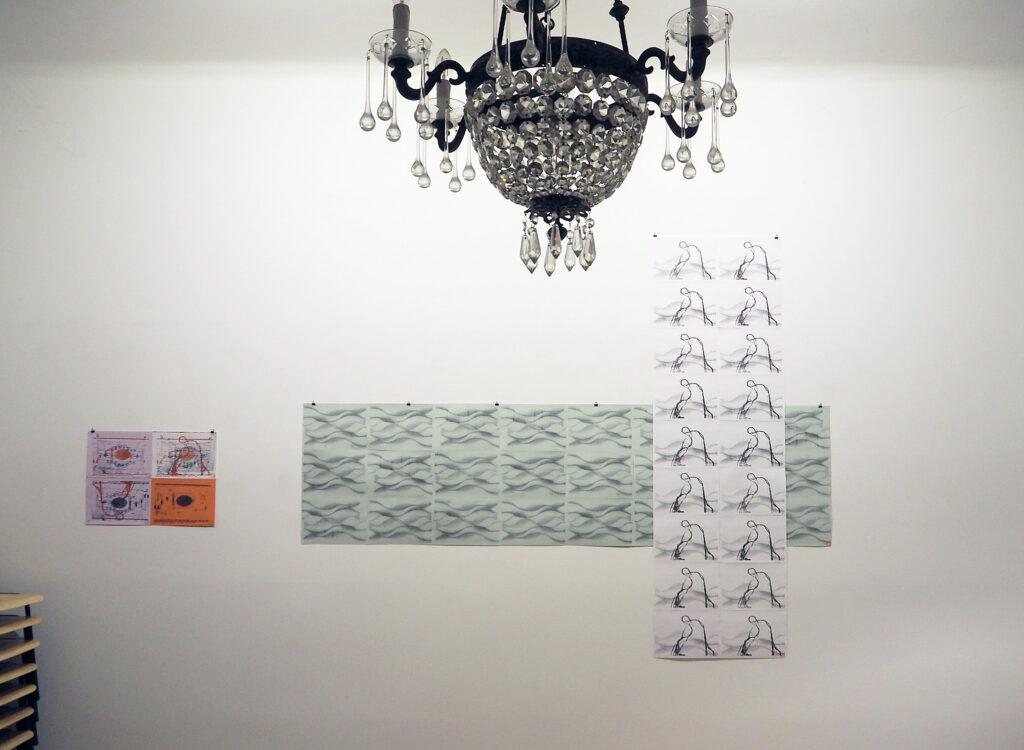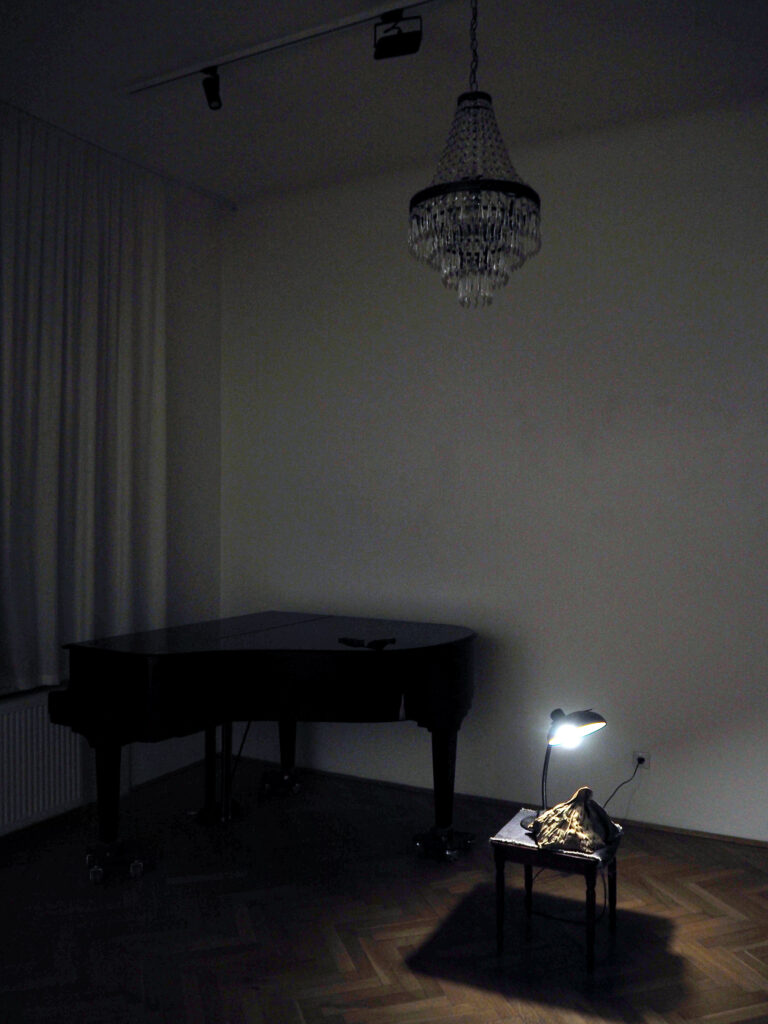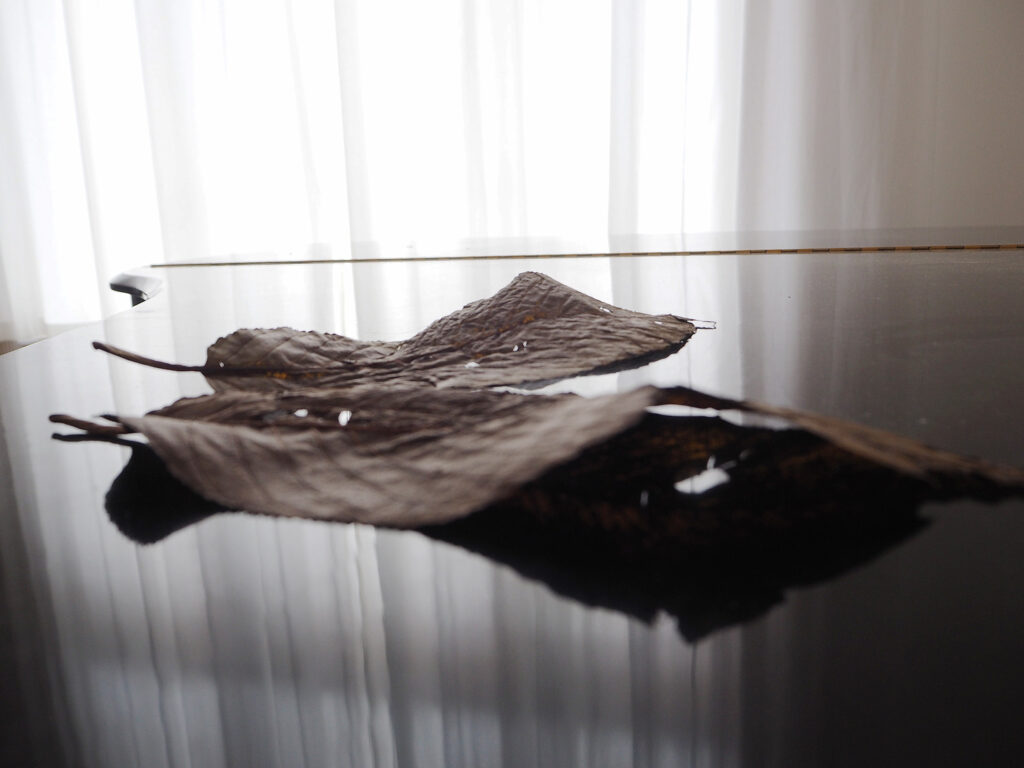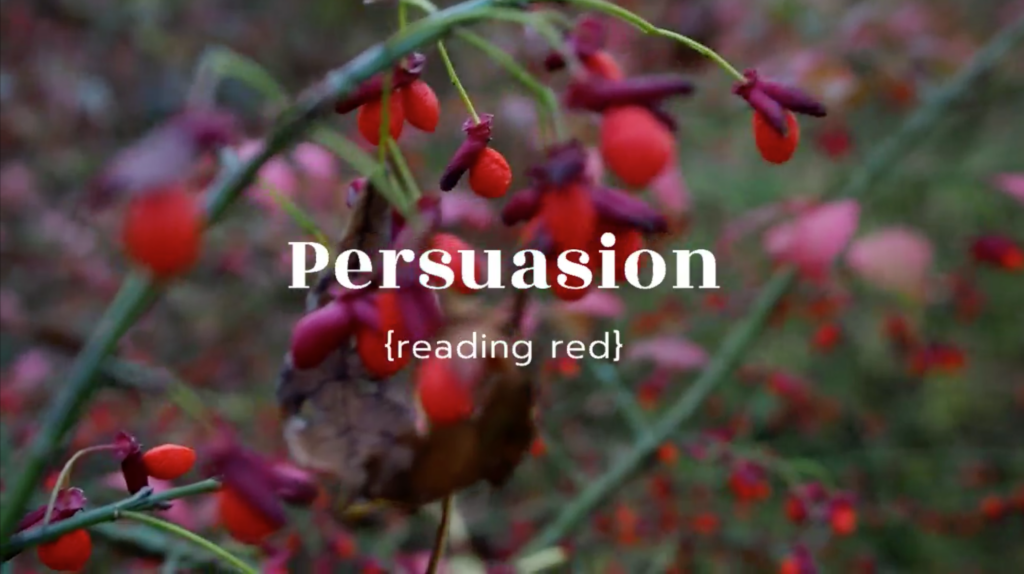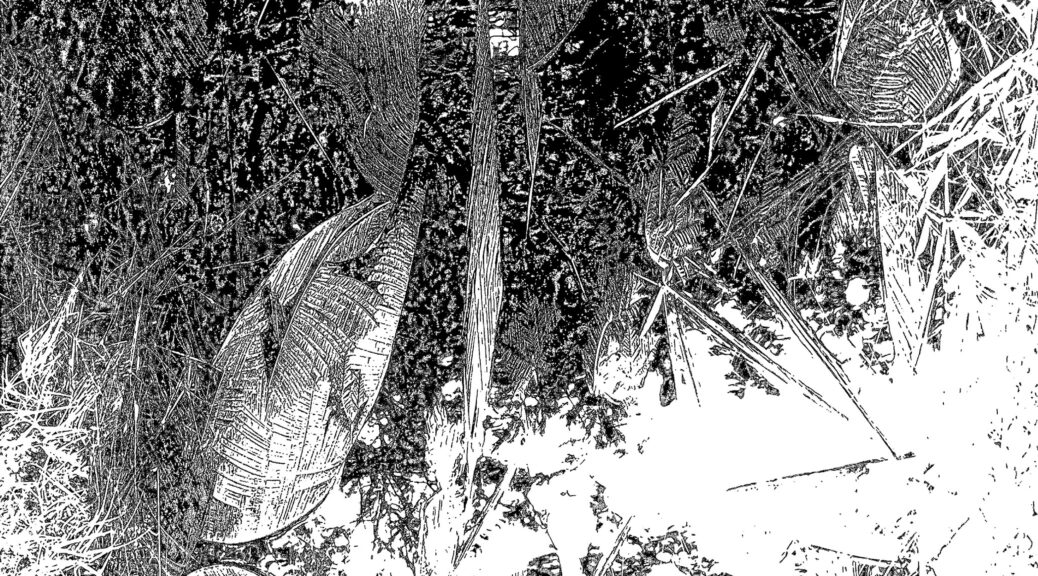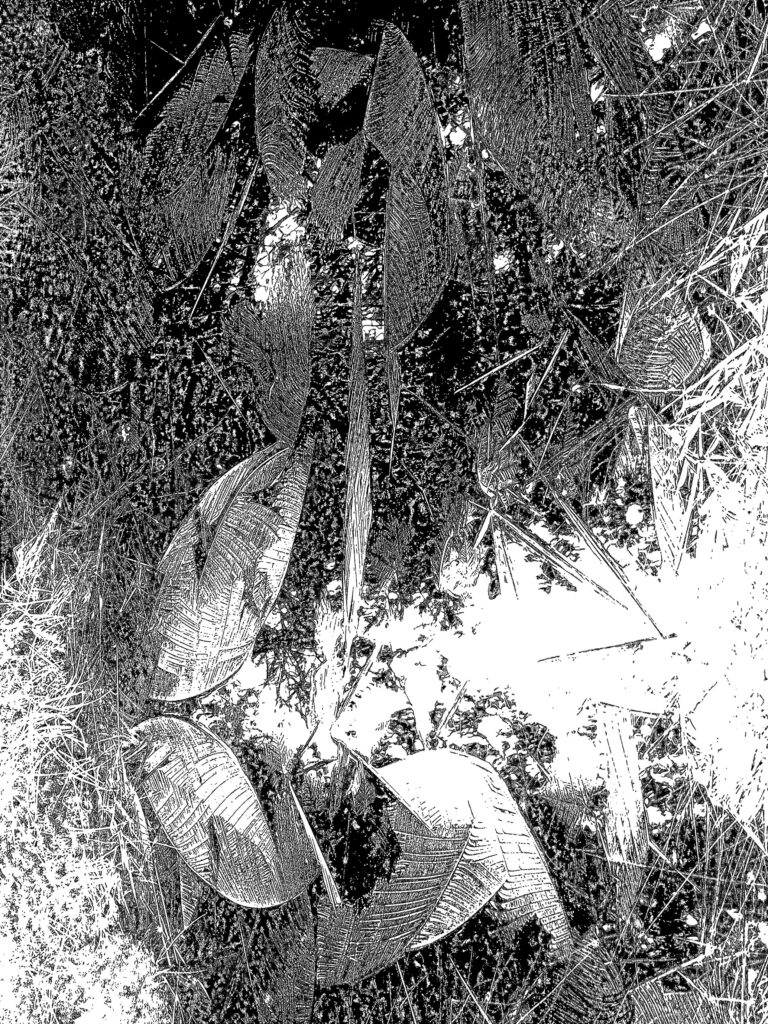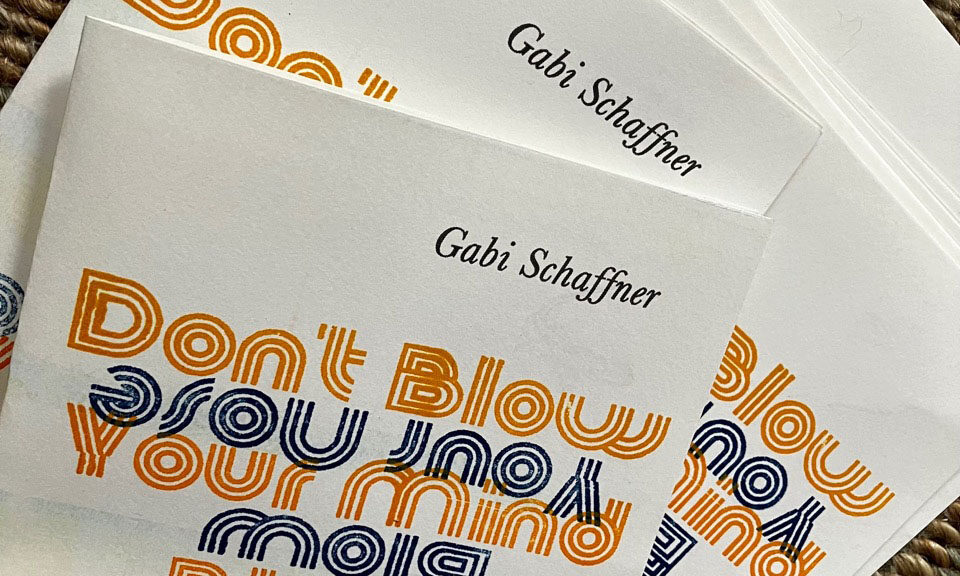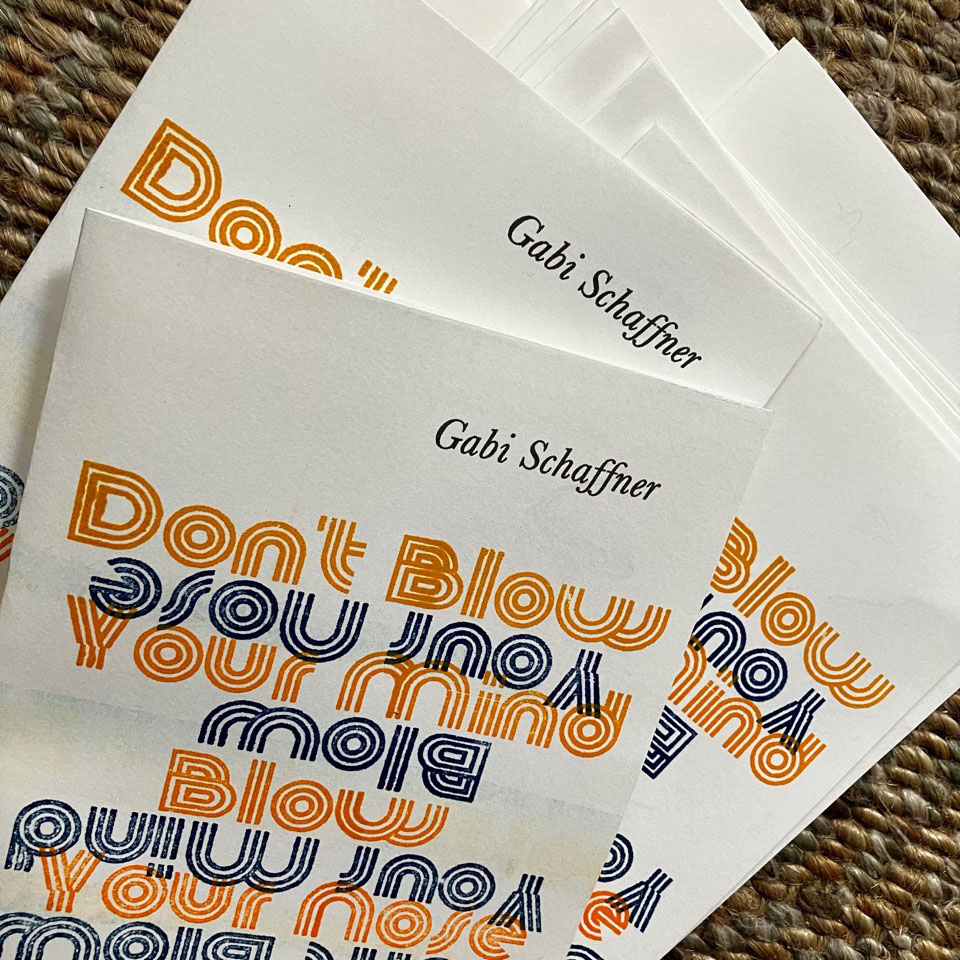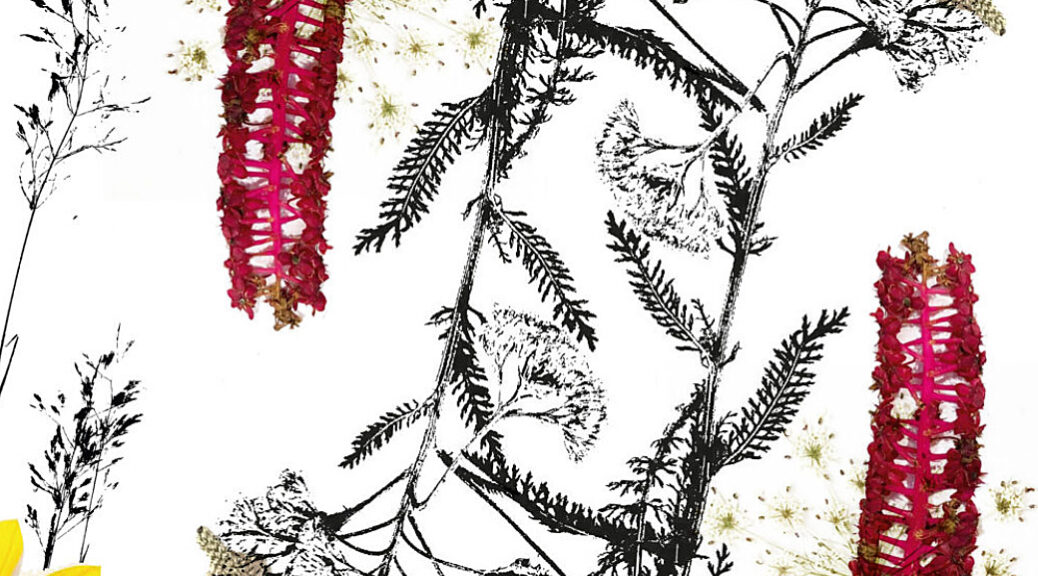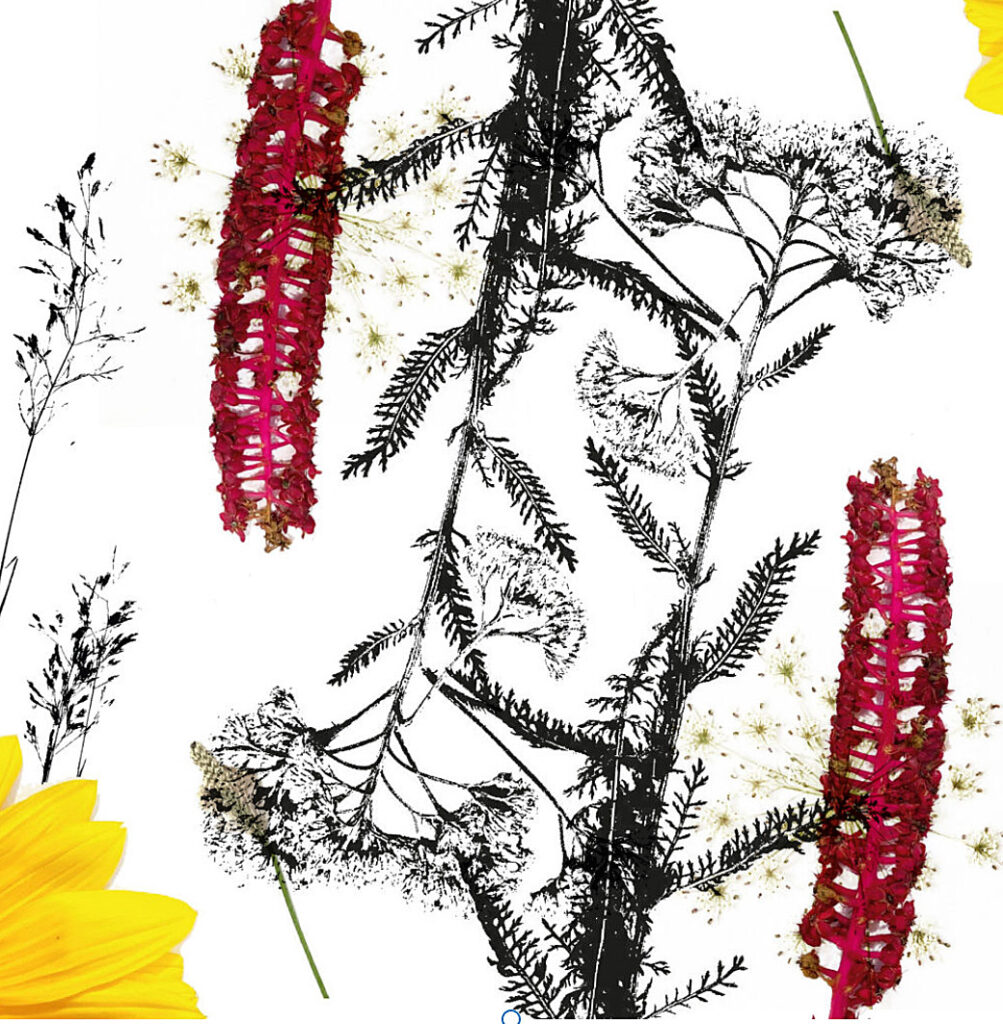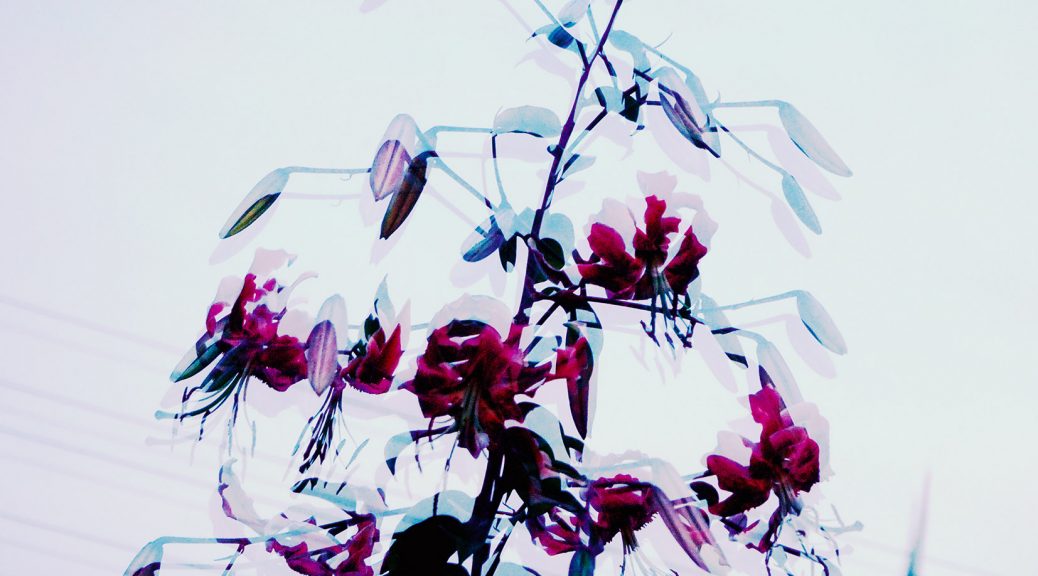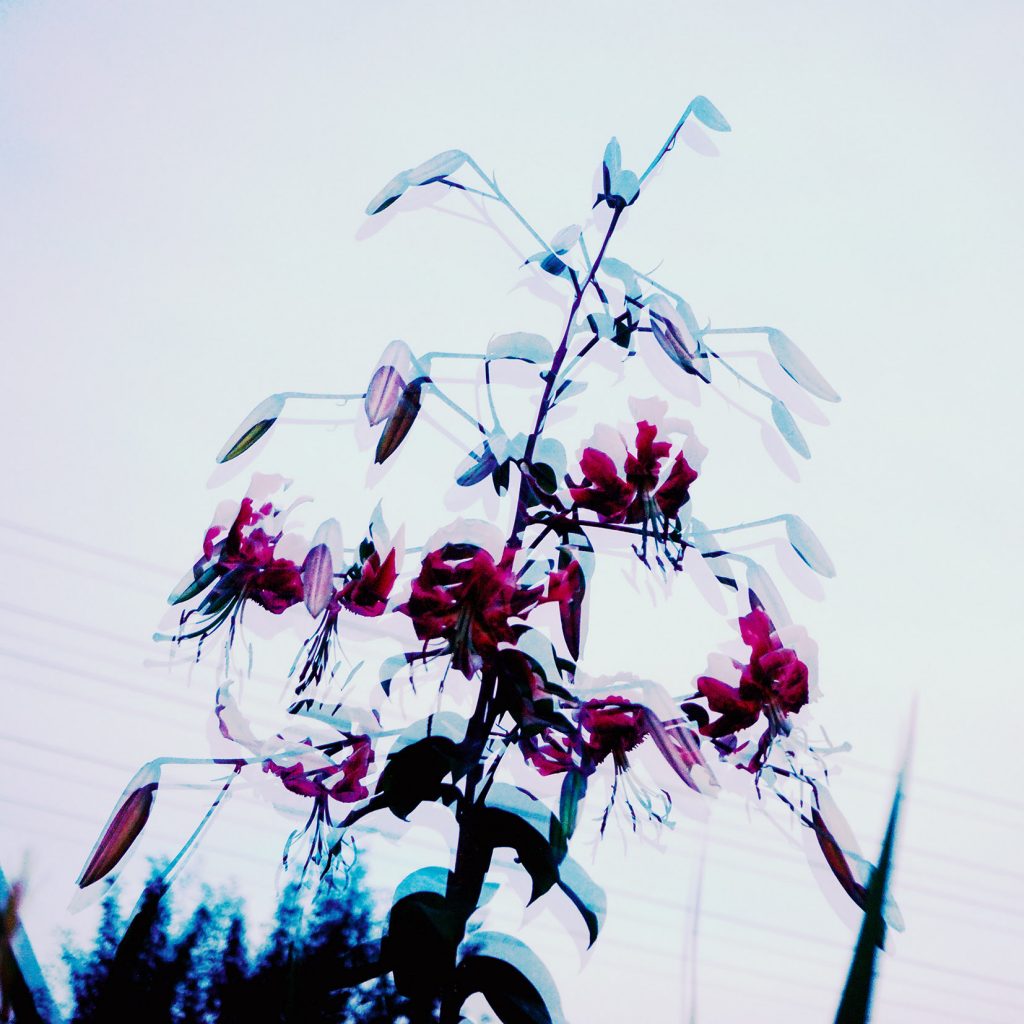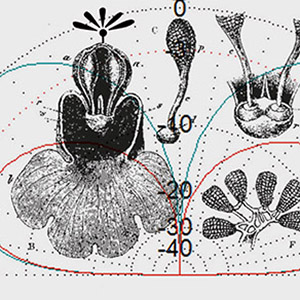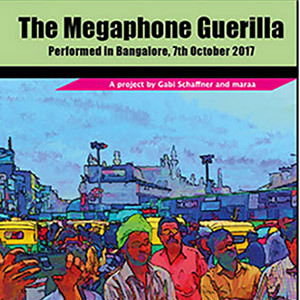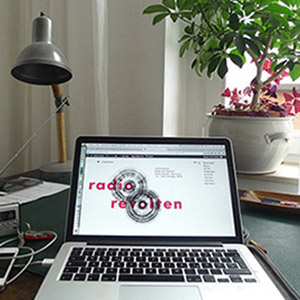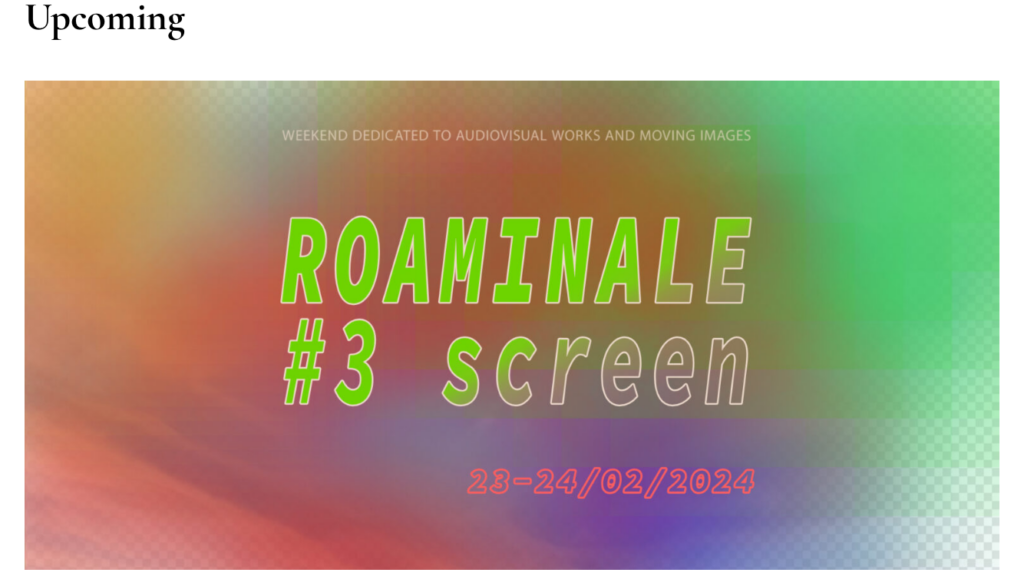
“Tales of Molecules and Light” will be shown during the Rominale #3 film festival in Berlin on Feb. 23. All movies were filmed in November 2023 at the Botanic Garden in Vácrátót, Hungary. The series comprises 16 videos, this exhibition presents four of them.
Credits:
Camera, text, sound, and editing: Gabi Schaffner
Additional samples/contributions:
Centerfold: Granular sound – lucyp123, 2021
In the Mountains: Prepared piano – Elo Masing, 2023
Lotus Receiver: Earth nose whistler recorded in stereo by Cluster 3 and 4 – Space Audio cc
Persuasion: Analogue Birds – Sarah Washington 2014; Piano – Anonymous, Finland 2008
Roaminale #3 screen is a screening weekend event dedicated to audiovisual artworks and moving images. The aim of Roaminale is to bring further visibility to works of various topics of concern and as well artistic creativity within distinguishable visions of each participant. Roaminale #3 screen is the third event in the series and is showing a selection of short films and video art in a variety of genres. The screening will take place parallel at roam project space and online.
Location: roam project space, Lindenstraße 91, 10969 Berlin & website https://www.roam-projects.eu/projects/
Time: Doors open at 6 pm; screening starts at 7 pm
Day 1, Feb 23, 2024
- Gaia’s Secret Passages
Peeter Laurits, Martin Rästa, Kaiko Lipsmäe - Kömlődi Lösz \ Yellow Soil of Kömlőd
Nemmivoltunk crew! \ We didn’t do it Crew! - Eliminated archive
Polina Shcherbyna - On Ugodnichestvo
Yelyzaveta Burtseva - Stories about Molecules and Light. 4 out of 16 videos
Gabi Schaffner - New Year, New Me
Robin Ellis Meta - Nothing
Kiwa - Silver Bullet
Holger Loodus - Habitat
Peeter Laurits, Maido Hollo - Carnaval Caimanera
Nathalie Grenzhaeuser - Powerplant – What Gives You Energy?
Miina Barrera Pinochet, Lucia Westphal, Gahee Chung - Where to start?
Vasylysa Shchogoleva - Wind in den Füßen \ Wind in the feet
Kirstin Burckhardt, Nicole Wendel - Shadow feeling
Louiza Andrus
Day 2: Feb 24, 2024
- Lioba von den Driesch
;paranoia publishing - Kiwa
Second Earth - Ivar Veermäe
Wild Hunt - Alexei Gordin
Harm Contradiction - Julian Larger
The Browse - Sten Saarits
Gate X - Lioba von den Driesch
Water Rises - Peeter Laurits, sound: Ann Reimann
Fog of War - Anna Manankina
Scattered and Found Files - Kelli Gedvil, sound: Natalia Wójcik
am i a joke to you - Kristen Rästas
last supper - Lioba von den Driesch
30 Years of Optimism - Alexandru Mihai Budeș, Lisa Marie Schmitt
